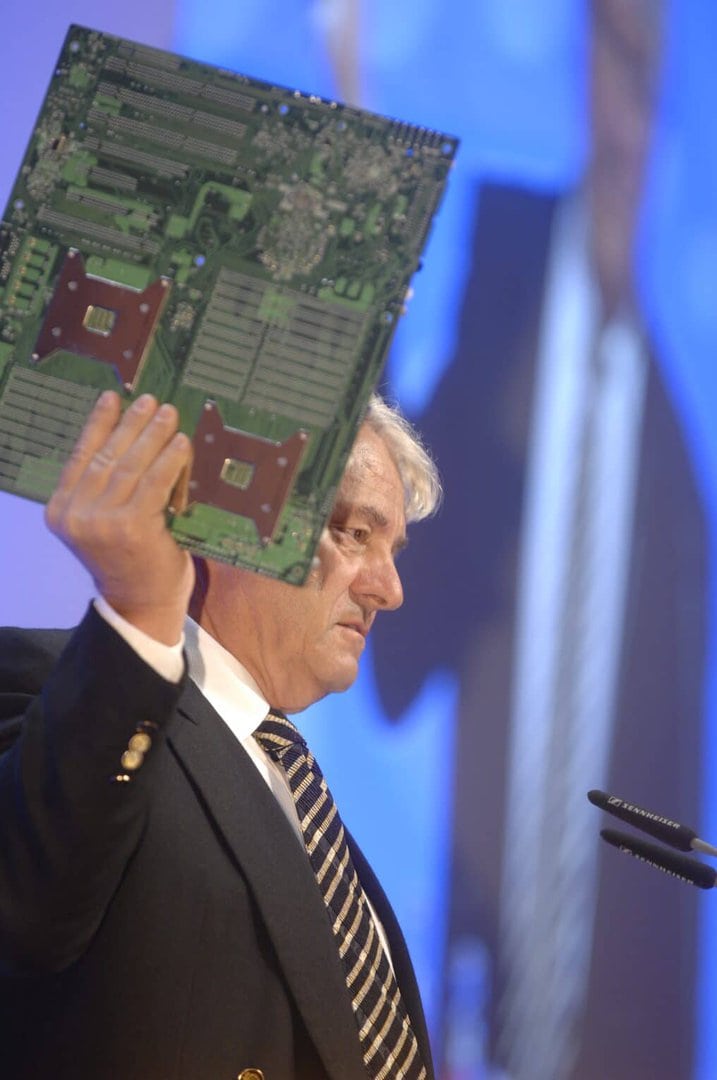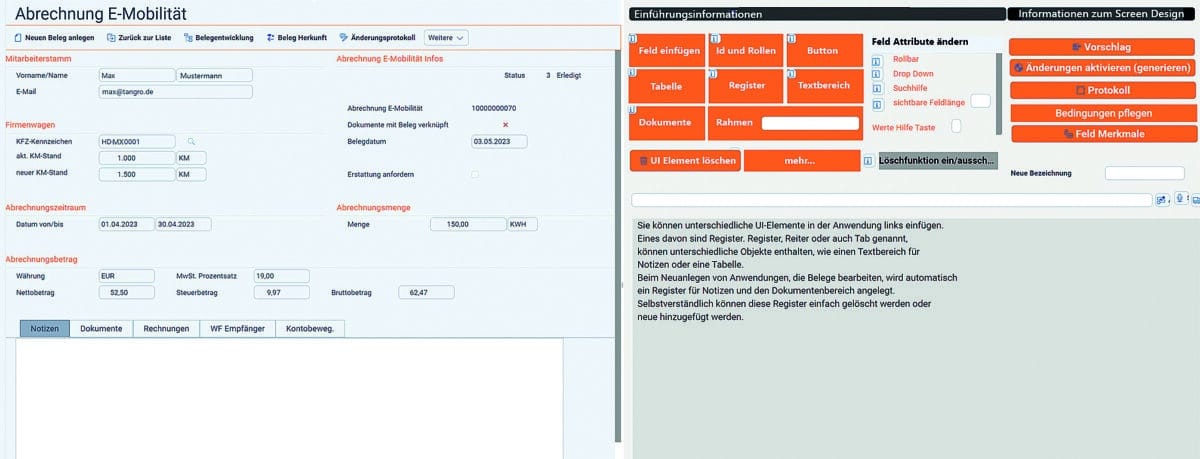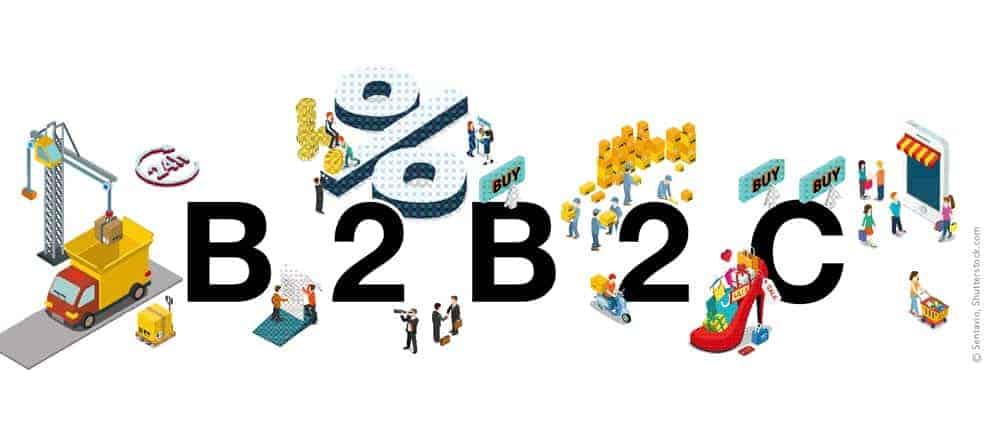The term low-code is seductive - even more so, of course, is no-code. Compared to higher programming languages such as SAP's Abap, the term "low" implies at first glance a downsizing to machine language. Should the SAP community now program with an assembler again? Certain statements made by Professor Hasso Plattner many years ago could be interpreted in this direction. SAP co-founder Plattner raved about the fantastic instructions of new Intel processors. Only these powerful CPU instructions (Central Process Unit) made the construction of the in-memory computing database Hana possible.
Perhaps Hana and the focus on technical innovation such as Intel processors were a cardinal mistake of the past ten years. Despite SAP's high enthusiasm for technology, however, ERP remains a business function for end users and not for computer scientists. Form follows function. Form follows function. Thus, ERP functionality comes first and precedes, downstream are the forms of a database, a platform, a development system.
User versus computer scientist
All Tangro products are characterized by perfect functionality for the end users. The ERP function leads the way. And with which downstream forms, tools and platforms has Tangro achieved its success? It seems curious that Tangro founder Andreas Schumann was already developing with a "low-code platform" when the trendy term low-code/no-code was still years away. Naturally, it is also explainable, because Andreas Schumann thought from the perspective of ERP users, while Hasso Plattner acted from the perspective of technical computer scientists. At Tangro, a development platform was created to serve end users; at SAP, a database platform was created for programmers.
Patrick Etter, co-director at Tangro, explains in an E3 interview that the Tangro platform can be used to create complex and individual business applications in addition to simple applications. "This means that our approach goes far beyond previous low-code approaches," emphasizes co-director Etter. "Because even more complex applications don't require any programming skills. This is where the differences to other platforms become clear, where programming expertise is required and support is needed above a certain depth."
Actually, it is forbidden to speak of a low-code development system with the Tangro platform, because here the goal is not to generate program code in a simple way, but the focus is on functional applications. The difference? The Tangro founder uses a practical example to demonstrate the added value of his system during the E3 discussion: user data from operational systems is already available during the conceptual phase of an app development. Thus, the developer does not design a generic screen mask, but a real and operational image from the very first moment. As often in life, the combination makes the added value. In this case, a development system that follows a low-code approach combined with real data from an operational system. The advantage: an unprecedented development speed!
Accordingly, Tangro's ERP system was developed ten times faster than programming comparable applications, even assuming that SAP Business by Design is perhaps fifty percent more capable. "If no one believes it, even though the evidence is visible, we simply develop the next ERP system," Andreas Schumann replies.
There are now plenty of low-code platforms on the market, all of which claim to offer the ability to develop applications without programming knowledge. So why yet another platform? "Tangro's approach is different in terms of its architecture and therefore its ability to develop complex applications," explains Andreas Schumann. The architecture of the Tangro platform is unique, which is underlined by a European and American software patent.
Patrick Etter provides further proof in the E3 discussion: "Yes, our automation solutions for inbound document management in SAP were actually developed with the platform. We now offer one of the most comprehensive offerings for automating document inbound in purchase-to-pay and order-to-cash processes, with eleven modules. As of today, around 400 companies are using software developed with the Tangro platform." The very first Tangro module, Invoice Receipt Processing, was developed using the platform. From then on, the platform established itself as a catalyst for the highly efficient development of other software solutions. "Our most recent module for shipping notifications, for example, was designed, implemented, and delivered by one employee within one month," says Patrick Etter, describing what was achieved.
Business thinking
Once again, Andreas Schumann comes back to the important and essential difference: "We approached the topic of software development from the business perspective and not the technical perspective. My experience at SAP taught me that business software performs a large number of recurring tasks within each individual application - transaction in SAP jargon. Developing a software module once per task and then reusing it over and over again seemed like a worthwhile approach."
Reuse is the central aspect of the Tangro platform. Reuse is perhaps familiar from car manufacturing, when the same alternator is installed in every car from a manufacturer. "That sums it up very well," says Andreas Schumann. "But you are correctly talking about the same alternators, which implies that a separate alternator has to be built for each car, which of course can sometimes contain a manufacturing defect. In software development, reuse is based on the same reusable software modules. Such a module only has to be developed once. The more often it is used, the higher the probability that it is or becomes error-free. The granularity of the software modules, which only ever perform a single task, plays a decisive role in this. If a software module does more than one task, its reusability logically decreases."
In addition to reuse, however, process modeling to put the building blocks in a meaningful order also plays an essential role, as does the ability to design a UI intuitively. "A very simple building block is the message building block," explains Andreas Schumann. "This building block only needs to know which message it should output depending on the process flow. Things get more complex with the second example, the calculation block, which is responsible for all arithmetic operations. In both cases it is made very easy for the Citizen Developer to parameterize the block in such a way that the block knows what it is supposed to do. It's not enough to state that a calculation module should calculate - it must also know how and what to calculate, for example, multiply the order quantity and the net price to show the net amount."
Low-code has arrived in the SAP community in terms of business and technology. Has Tangro also caught the right moment? "Bringing new products and ideas to market always needs the right timing," defines Matthias Berg-Neels, Head of Product Development SAP-Dev at Tangro. "There were tablets before the iPad and smartphone-like devices before the iPhone. But the time was not yet ripe for these devices. It's the same with many low-code/no-code platforms."
The architecture of the Tangro platform is fundamentally different from other low-code/no-code platforms. The common platforms are based on a concept of code generation in the background. This code is generated from existing patterns and thus solves a specific problem in the form of an application. But Matthias Berg-Neels knows from his practical work that this severely limits further use and results in static applications that are limited precisely to an encapsulated problem. "The Tangro platform does not generate any code, but always uses existing building blocks anew," he emphasizes again the added value already mentioned above by Andreas Schumann. "Due to the free combinability of the building blocks, any business process can thus be mapped. In terms of further developments and error corrections, the Tangro platform thus has an enormous advantage. Every transaction benefits immediately from the improvement of the optimized building blocks without having to adapt the applications themselves," is the experience of Matthias Berg-Neels.

Professor Hasso Plattner has been very technically oriented for many years with Hana, Datasphere and Business Technology Platform (BTP), while Andreas Schumann, Tangro, cultivates more of a business perspective.
Reusability
This means that reuse is the central aspect of the Tangro platform. "But the best building blocks are of no use if they cannot be recombined and used by freely modeling the processes," defines Matthias Berg-Neels. Also, the modeled processes are not usable if they are not presented through an intuitive user interface. He adds: "On the Tangro platform, the first question during development is therefore always to look at the business process - what data is needed to design the user interface from. What should happen to the data to model the processes from it and combine the reusable building blocks for this purpose?" Besides the technical implementation, the main difference to other platforms is the approach via the business aspect.
Low-code providers often argue that their platform is intuitive to use. On closer inspection, weeks of training become necessary. As soon as things get more complicated, you're confronted with JavaScript or other programming languages. "Matthias Berg-Neels knows that "there really is no such thing as a low-code/no-code platform without code.
At the TechEd conference a year ago, SAP introduced Build, a new app development concept designed to leverage the expertise of those who obviously know the most about the company: the employees in the business departments. SAP Build is a low-code offering that uses the SAP Business Technology Platform (BTP). It is designed to give users access to SAP's enterprise technology and direct access to end-to-end processes and data, as well as the context needed to make smarter decisions and drive innovation quickly.
However, what SAP Chief Technology Officer Jürgen Müller did not reveal during his presentation of Build: where the employees from the specialist departments are to obtain the extensive BTP, process and data structure knowledge. BTP is a powerful and comprehensive platform in the S/4 Hana system. The ability to develop ERP processes on this platform now, be it with Abap, Java or Build, has probably not come naturally to every SAP end user.
"SAP has unveiled Build, a low-code offering that leverages the Business Technology Platform and is designed to enable users with minimal technical knowledge to extend SAP enterprise applications, automate processes and assemble web interfaces into a prototype using drag-and-drop," comment Jens Hungershausen, CEO, and Sebastian Westphal, Chief Technology Officer of the German-speaking SAP User Group. From DSAG's point of view, it goes without saying that SAP should build applications that are easy to create and use - and not just for laypeople, but also for SAP experts. "Nevertheless, SAP Build is, from the point of view of its approach, a solution that we as DSAG welcome, as it can be an effective means of taking the edge off the shortage of skilled workers in many areas and reducing the shadow IT that often exists in companies. However, it must be clear to everyone that this solution is not a substitute for traditional software development, so it remains to be seen to what degree of process depth the offering will prove itself in practice," add the two DSAG board members.
Tangro founder Andreas Schumann also joins the ranks of Build critics: "Let's take SAP Build, SAP's low-code platform. Here, the first thing to do is read about two hundred pages to understand the approach. Considerable technical understanding is required to understand the approach. With other providers, the aforementioned training courses become necessary," says Schumann, explaining the practice. After designing the UI, the next step is the so-called binding, which takes care of transporting the data between the UI and the process logic. To cut a long story short, Andreas Schumann says, "The moment you start working with the Tangro Low Code Platform, you are guided step by step in designing the UI. You don't have to worry about the software modules called in the process logic getting the data entered on the UI to do their job, nor do you have to worry about the data being stored on or read from the database. The process logic is partially enriched by the platform itself. Any change on the UI and in the process model you see immediately, without changing the medium, in the application. After formulating the voice instruction for the calculation process, you can immediately see the result in the Net Amount field by entering the order quantity and the net price. And that only addresses part of the benefits."

Intuitive work: Users of the Tangro platform can see at a glance which options are available for designing the UI (right side of the screen). Without changing the view, the result can be seen in the application in real time (left side of the screen).
SAP Build and BTP
SAP only offers its low-code platform in the cloud as part of the BTP. DSAG has already criticized this, pointing out that most existing customers still use the SAP suite on-prem. "This is precisely the customer segment we serve," explains Schumann. "But of course, our offer will also apply in the cloud in the future."
"However, as one of our recent surveys showed, a large number of our member companies are still heavily involved in the on-prem environment. It would therefore be desirable for the possible integration and use in the ECC environment to be presented in a tangible and implementable way to support the transformation programs for the member companies," note Jens Hungershausen and Sebastian Westphal critically. "Especially with regard to the extension of SAP applications, it is important that the undoubtedly goal-oriented possibilities of the solution also consistently benefit companies that do not yet want to or cannot rely on cloud solutions - and that usability for ECC customers is ensured until the end of maintenance communicated by SAP," is the DSAG opinion.
"The demand for advanced digital solutions is significantly greater than the capacity of professional developers to deliver them," said Arnal Dayaratna, research vice president of software development at IDC. "IDC expects more than 100 million enterprise users worldwide to be involved in digital solution development over the next decade. Build's low-code development solutions enable business users to leverage their expertise to rapidly develop and optimize digital solutions at scale."
Experimenting with low-code platforms can encourage companies to innovate more and take more risks because the cost and time required to develop new applications is greatly reduced. Andreas Krings-Stern, Head of Web Applications at Tangro: "As a front-end developer, I'm spoiled by short feedback loops. Low-code platforms not only bring a common language between development and business through their visualization of processes, but also increase development speeds through reusability. This also gives you short feedback loops in the backend, which you can quickly adapt to the requirements from the business department."
The Tangro customer needs a contract and web access via a browser. Then he can get started. He can select his self-created applications for the transport from a list by double-clicking. So that the transport is offered to him on a designated customer website and he can download the transport to his system. "The new applications are ready to run immediately for existing SAP customers in the SAP suite or on the BTP," explains Andreas Schumann. The necessary integration via Bapi or function modules is made easy by a convenient mapping tool that is included. Reading and writing data from SAP applications is thus optimally supported - without programming knowledge, of course.
Goal: Process improvement
"Since I don't originally come from the IT industry, the Tangro platform was the only way for me to get into software development," currently says Steffen Gieraths, Head of SaaS Development at Tangro. "With the Tangro platform, I was able to implement my ideas for process improvements almost independently, without having any programming knowledge myself. This enabled me as a specialist to develop many different applications in a short time and thus contribute to the further optimization of the platform on the one hand, as well as contributing to more effective administration on the other."
Final question for Tangro founder Andreas Schumann: When will the Tangro platform be available? "A second pilot customer could start in the second quarter of 2024 - the first was Tangro itself, as I said."







![[shutterstock.com:450441286, Tithi Luadthong]](https://e3magpmp.greatsolution.dev/wp-content/uploads/2017/05/shutterstock_450441286.jpg)